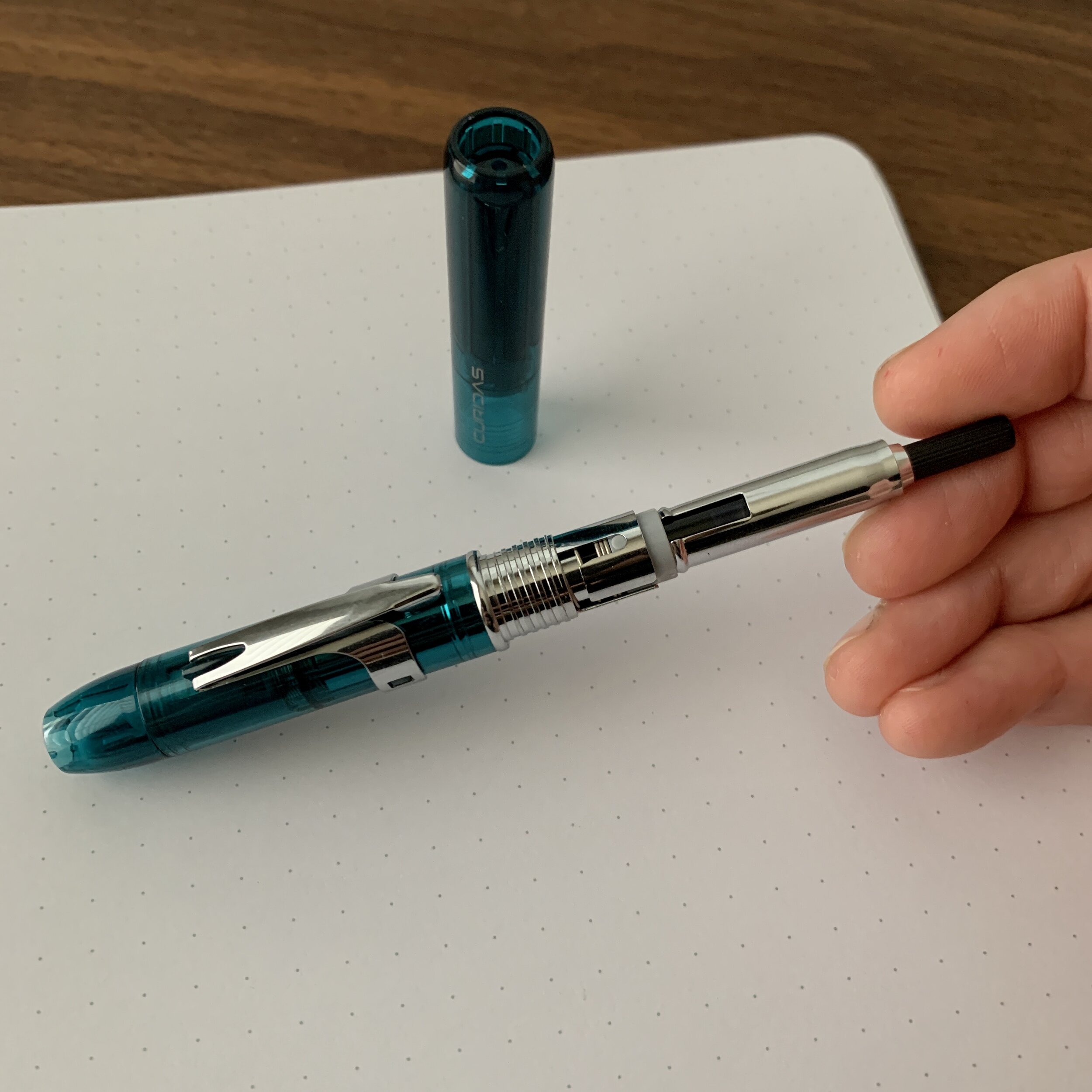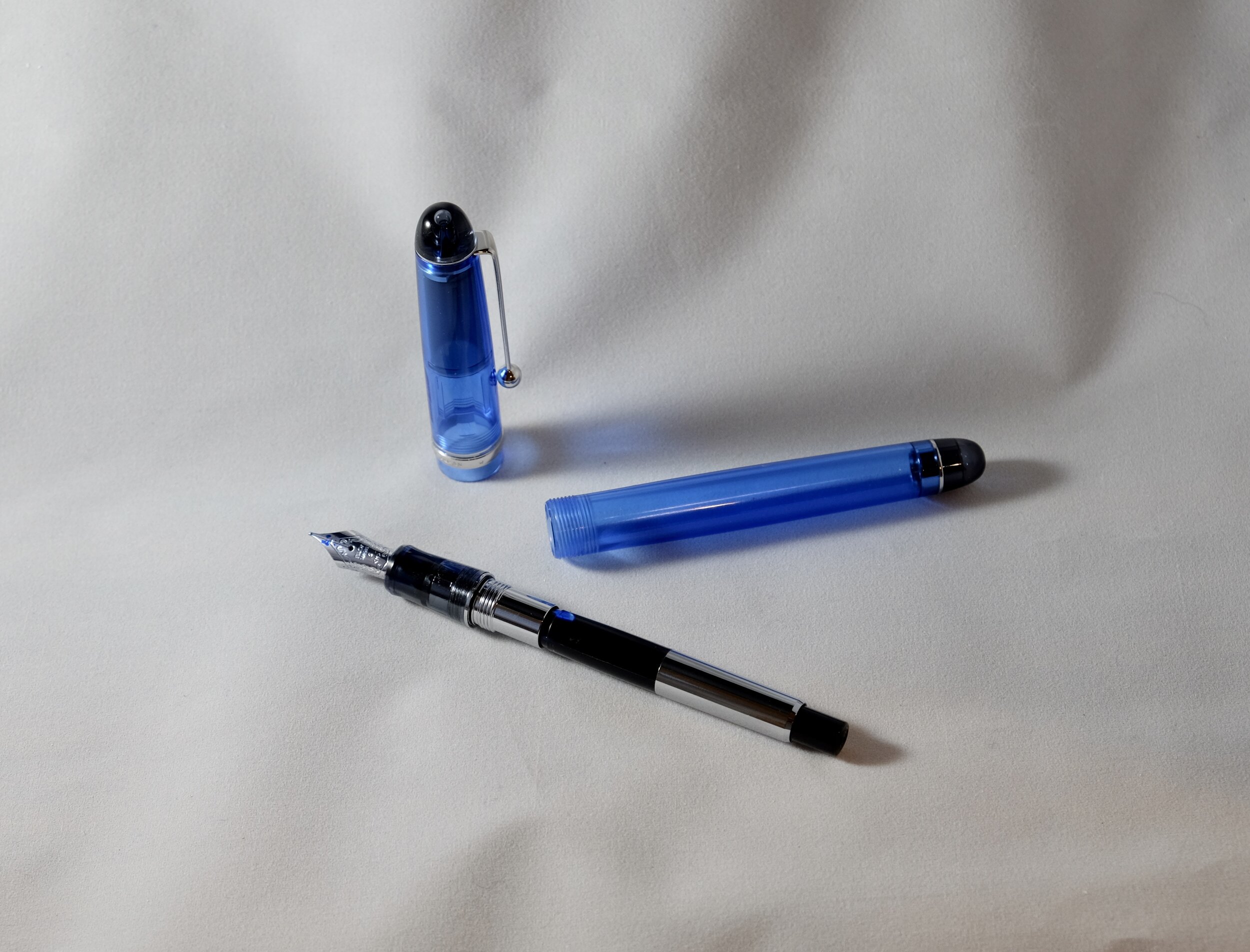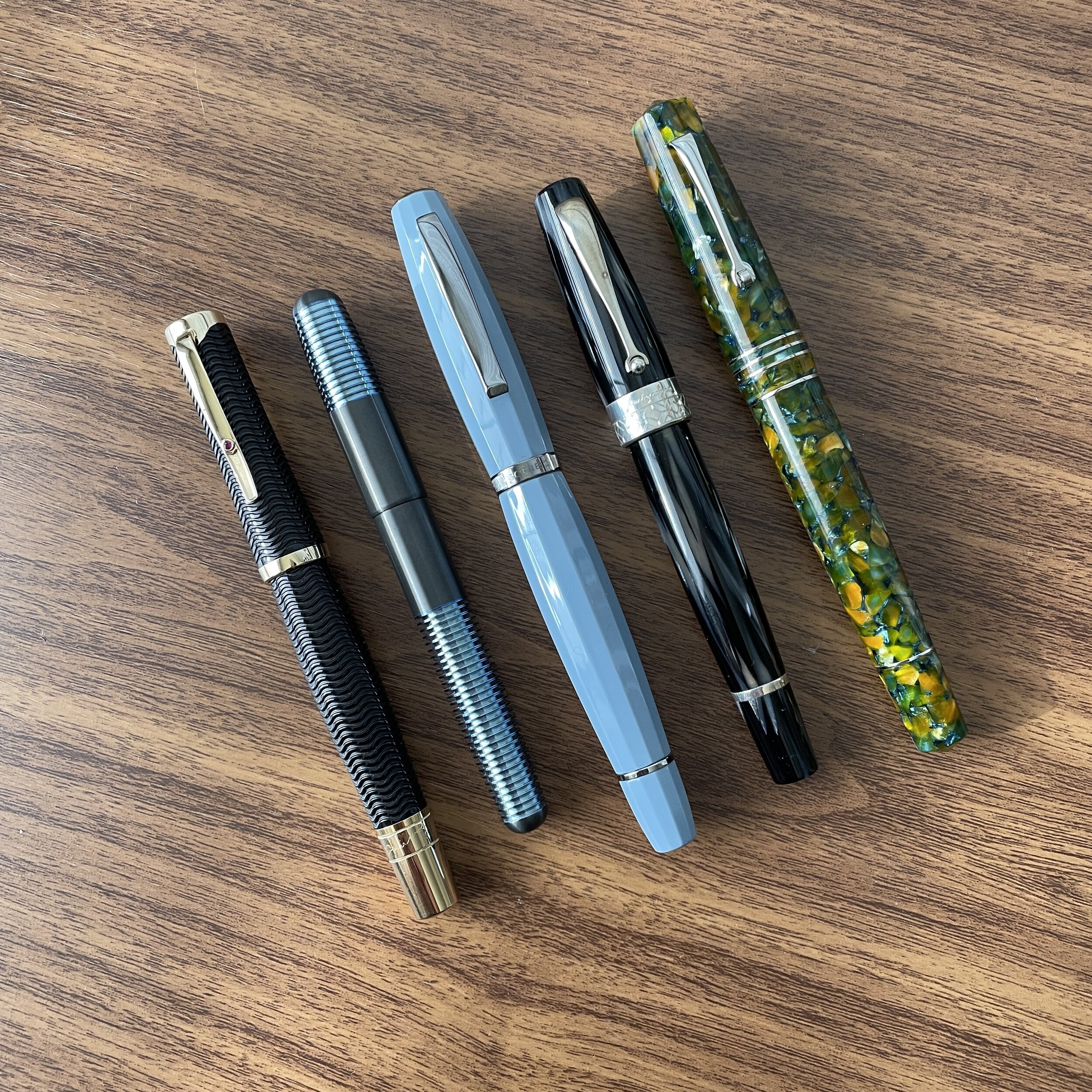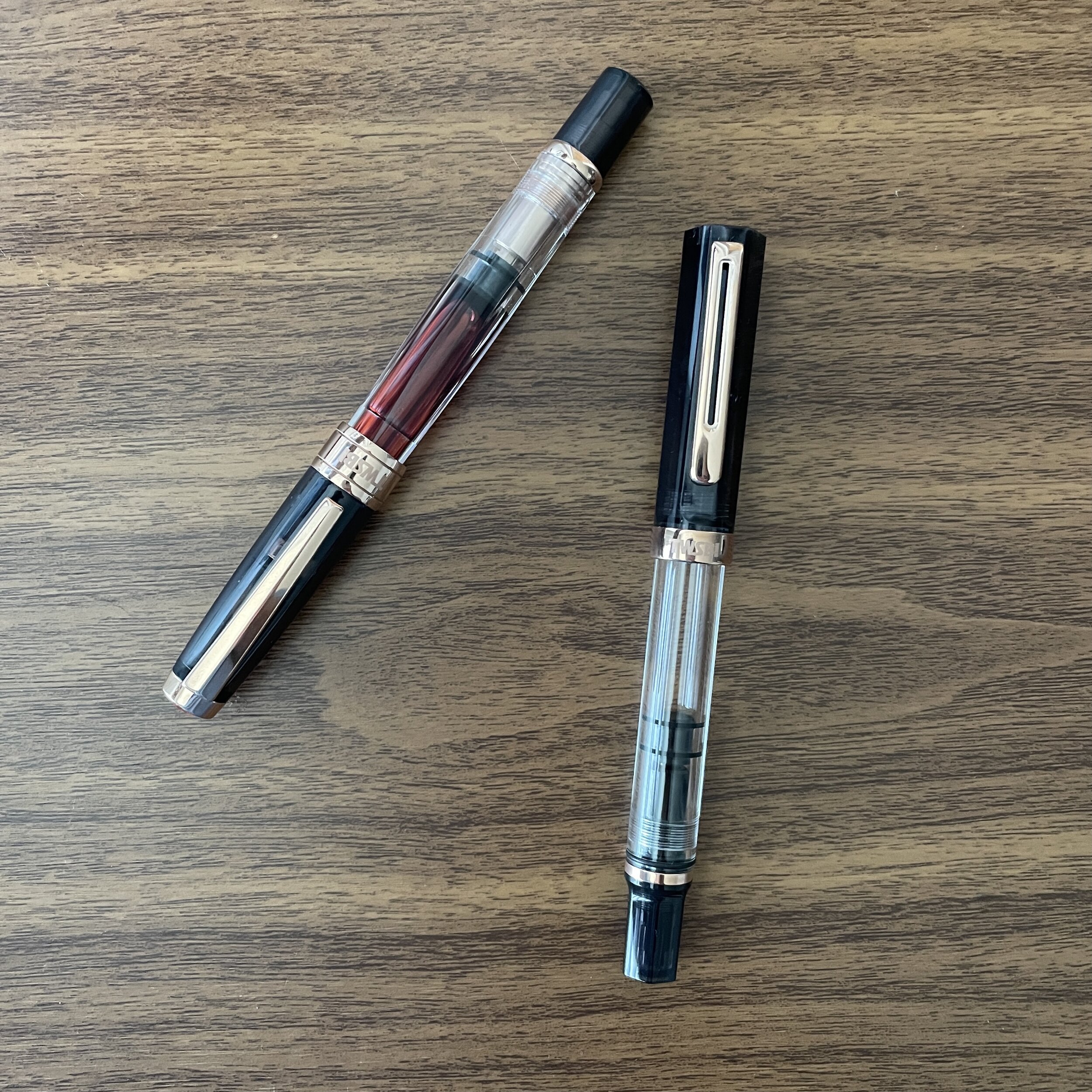I’ve avoided writing about the “Conid craze” that took over the pen community during the Pandemic years. While I have nothing against these pens - I currently own a Conid Bulkfiller Kingsize that I regularly use, and previously reviewed the Bulkfiller Minimalistica - the prices these pens were commanding on the secondary market (in the multiple thousands of dollars) struck me as extreme. Today, it’s died down a bit as Conid has resumed limited production, and more companies are releasing pens with a version of the “Conid filling system”, which Conid calls the “Bulkfiller” but which has alternately been described as a syringe filler, or “pump piston” (Kyuseido’s term). While I might eventually write longer form reviews of all of these specific pens, each of which offer a slightly different take on the technology, I wanted to start with my general thoughts on the filling system itself, including what I view as its advantages and disadvantages, as well as alternatives that some might find less finicky.
The Conid Bulkfiller Kingsize with the plunger rod engaged and extended, ready to fill.
How Does a Syringe Filling System Work?
I prefer describing this filling system as a “syringe filler” because I find it a more intuitive description of how these pens work. (Yes, I know these are distinct from various vintage filling mechanisms marketed as “syringe fillers.” This article is about the modern category of pens, and I may be using my own terminology here.) These pens use a plunger, much like a vacuum-filling pen, but while a typical vacuum-filler takes advantage of a vacuum in the barrel created when the user depresses the plunger past a certain point, a syringe-filler fills on the upstroke (like a syringe). The filling mechanism is somewhat complex, with a more involved filling process compared to most other fountain pens:
You start by unscrewing the blind cap, which disengages the plunger rod just as you would with a vacuum-filler.
You then pull the rod all the way back, and thread or hook the seal into the plunger head, which sits at the back of the barrel. This will allow you to push the newly assembled “plunger” all the way forward and prepare to take up ink.
Dip the nib/section of the pen into the ink bottle, and then slowly draw back on the plunger (like a syringe), which should allow you to fill the barrel to near 100% capacity. At the top of the filling stroke, you unscrew the rod to disengage the plunger rod from the seal and slide it back into position at the top of the section.
Check out this YouTube video from Doodlebud, which is an excellent demonstration of how the Conid version of this filling system works.
Freshly inked with 3 Oysters Doldam, a great blue-grey!
What I View as the Advantages of This Filling System
As I mentioned, this type of filling system is more complex, necessitating a more involved process to fill your fountain pen. So why should you bother, apart from the inherent “cool factor” of having such an overengineered mechanism on an already overengineered category of writing instruments?
Ink Capacity. These pens hold an insane amount of ink (anywhere from 2-4ml, depending on the model). For those obsessed with maximizing ink capacity and using the full barrel as an ink reservoir, syringe fillers and eyedroppers are your best options. If you don’t change ink often, and want to refill as infrequently as possible while not messing around with inherently messy eyedroppers, you definitely want to consider this filling system.
Ease of Cleaning. Because you can force a large volume of water through the pen using the high-capacity filling mechanism, these pens are easier to clean than vacuum-fillers, standard piston fillers, eyedroppers, and honestly pretty much any other pen. My Conid Kingsize demonstrator will flush clean in as little as one or two cycles.
Travel-Friendliness. When the blind cap is fully secured and the plunger rod completely screwed down, it creates a seal between the main ink reservoir (the barrel) and the primary writing reservoir in the section, which will help prevent burping and leaks during air travel and temperature fluctuations. So not only do you have a pen that will hold an extraordinary amount of ink for an extended trip, but you have the same safeguards against “inksplosions” as a vacuum-filler or Japanese-style eyedropper system. On all of these pens, you will need to open the valve to allow ink to flow freely for a more extended writing session.
Ink Flow. With the valve open, you can get pretty heavy inkflow due to the volume of ink in the barrel. If you enjoy wet writers, or have a broader nib or ebonite feed that uses a lot of ink, you may love this pen. That said, as I’ll discuss further below, the ink doesn’t always flow seamlessly between the two reservoirs. You sometimes have to shake/tap the pen to force additional ink from the barrel into the section, which can cause significant variations in the level of ink flowing through the nib and feed that leads to the pen writing an inconsistent line.
The Kyusedio Kakari and Conid Bulkfiller Kingsize, both inked but not “full”. (I’ve been writing with both for a couple of weeks and look at all the ink that’s still in the pen!
The Disadvantages
Price. Conid ran into production issues over the past several years, leading to a scarcity which pushed demand far in excess of what the company can produce, with prices increasing accordingly. Currently, a Bulkfiller Kingsize starts at $900 for the pen, which I don’t believe includes the cost of the nib, shipping, and applicable taxes and customs duties. That is, if you can get one direct from Penworld, as these are sold in limited batches that often sell out in minutes, and secondary market prices have been astronomic at times. The Kyuseido Kakari is slightly less expensive for a 14k gold nib version. Companies such as Asvine and PenBBS make lower-cost versions of this filling system in the $50-60 dollar range, which feature steel nibs, so I would likely recommend starting here simply to see if you like the mechanism and design before acquiring a more expensive option.
Yes, the Mechanism Can Be Finicky. Because there are so many moving parts, more can go wrong. The most widespread problems I hear about with these pens, across brands, is the piston/plunger head “sticking” at the top of the barrel, and/or the plunger rod becoming stuck and not disengaging from the plunger. While these issues are more common in the lower-cost pens, I’ve had the issue occasionally arise with my Conids and Kyuseido pens as well. Thankfully, I’ve always been able to figure out a fix myself, because shipping pens internationally for a repair is not a simple (or inexpensive) proposition.
Inconsistent Inkflow. I’ve found the ink flow on my bulkfiller/syringe-filler fountain pens to be less consistent than with my vacuum-fillers and Japanese-style eyedroppers. On nearly every pen I have used with this style of filling system, the ink has a tendency to stick at the top of the first reservoir, which requires you to shake or tap the pen to get additional ink to flow from the barrel. I assume this is due to surface tension, but it’s somewhat frustrating on pens at this price point that someone hasn’t figured out how to fix the issue. Does it keep me from using these pens? No. But I’d be lying if I said it wasn’t annoying. Honestly, the issue was so bad on my original Minimalistica that I ended up parting with the pen. It’s somewhat better on my new Bulkfiller Kingsize and Kyuseido Kakari, but still a factor.
An approximation of what can happen with the ink “sticking” at the top of the reservoir and not flowing down. I tried to recreate the issue here for photography purposes, but it tends to happen spontaneously as you’re writing, requiring you to tap or shake the pen to get ink flowing again.
Closing THoughts, Alternatives for a Similar Experience, and a note on fomo
Are these cool pens, that feature a lot of clever engineering that’s enjoyable to use every day? Absolutely. Would I buy my pens again? Absolutely. Do I feel like the hype on these pens is somewhat excessive and that people should carefully consider their options before making such an expensive purchase? Also yes. As I noted in my original review of the Conid Minimalistica nearly a decade ago, these are “pen geek” pens, and I don’t recommend them to everyone, especially beginners. Be prepared to tinker a bit, and if you’re newer to fountain pens, I’d recommend trying one in person or experimenting with the lower cost options from PenBBS (Model 355) or Asvine before spending a lot of money. Honestly, try a Japanese-style eyedropper to see whether you even like a pen that holds this much ink. If you’re a serial ink-changer, you may find that you prefer cartridge-converter.
As you can see, because they hold so much ink, they tend to be larger pens. Shown here alongside a Montblanc 146 (far left) and Waterman Exception (far right).
The observations I make in this post apply across brands and models using this filling system, so there’s no “knock” intended on any particular pen. I enjoy using both my Conid Bulkfiller and Kyuseido Kakari, both are well-made, quality pens, and they are both going with me on vacation tomorrow. As a pen enthusiast and longtime fountain pen user, I love having examples of all the creativity and craftsmanship that goes into designing these pens.
So why have I been so conscious about emphasizing the “downsides” in addition to the positives? Because I’ve noticed a significant amount of social media-generated FOMO associated with these pens, which can be dangerous with such an expensive, often sight-unseen purchase. I don’t subscribe to the mentality I’ve seen in certain forums that acquiring one of these pens should automatically be everyone’s “grail,” and I cringe when I read about relative fountain pen newbies paying thousands for secondary market Conids before ever using one. As is the case with nearly any pen or filling system, these pens aren’t for everyone, and for ever person I know who considers their bulkfiller/syringe-filler a “grail pen,” I know someone else who finds these pens finicky and frustrating to use. To that end, if you want to use one of these pens to see if they’re for you, you’re always welcome to try mine. Pen show after-hours gatherings are great venues, as are local pen clubs, and since we now have a Gentleman Stationer physical store, just stop by! (Permanent hours will be posted next week.)
The Gentleman Stationer is supported by purchases from the T.G.S. Curated Shop and pledges via the T.G.S Patreon Program.



